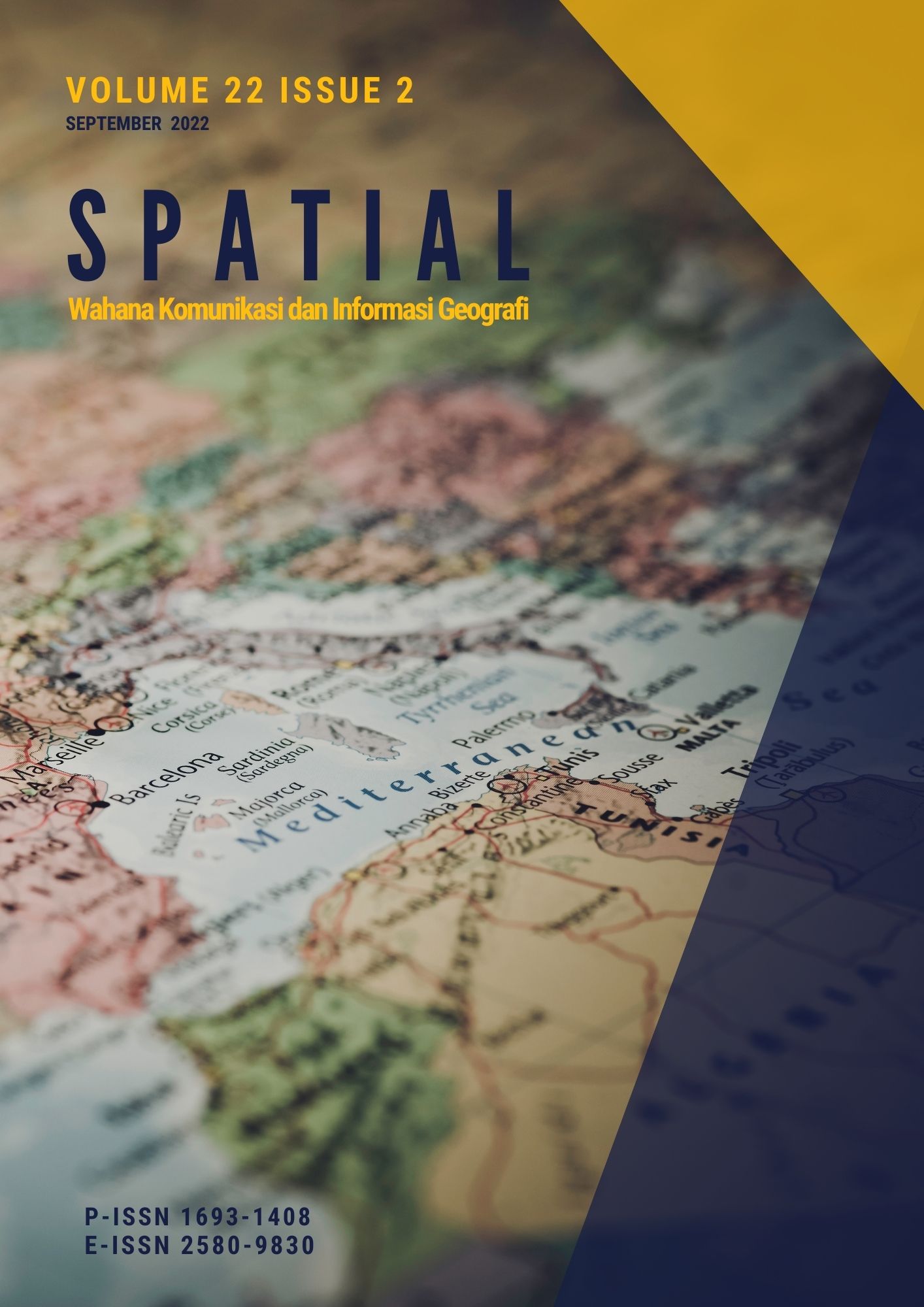Sebaran Daerah Asal Pengunjung Virtual Tour Museum Nasional menggunakan Analisis Tetangga Terdekat
DOI:
https://doi.org/10.21009/spatial.222.03Keywords:
Museum Nasional, Virtual Tour Visitors, The Origin Of Visitors, Nearest Neighbor AnalysisAbstract
This research is useful for knowing the origin of visitors who visit the Museum Nasional through a virtual tour of the Museum Nasional. This is because virtual tours are a new breakthrough for tourism activities in Indonesia. The method used is a survey approach with a sampling technique in the form of accidental sampling through google forms distributed through social media, such as twitter, WhatsApp group, comments on the Museum Nasional YouTube channel, and Instagram starting on December 26, 2021 - January 6, 2022, namely as many as 42 people and the number of respondents obtained on July 25 – July 30, 2022, as many as 62 people with a total of 104 respondents who made virtual visits to the Museum Nasional. Results Based on what was obtained, most of the visitors came from the provinces of DKI Jakarta, West Java, Central Java, Banten, and East Java. To determine visitors who do virtual tours of the Museum Nasional, researchers use Nearest Neighbor Analysis contained in the ArcGIS application. In this case, the researchers digitized the distribution points of visitors (by district/city) who made virtual visits to the Museum Nasional which got 27 points from the districts/cities of origin of visitors (104 research respondents). Then, the results of the distribution category are dispersed distributed because the Nearest Neighbor Ratio is 32,094.
Downloads
Published
How to Cite
Issue
Section
License
Copyright (c) 2022 Cynthia Putri Haviarini, Oot Hotimah, Ahman Sya

This work is licensed under a Creative Commons Attribution 4.0 International License.
An author who publishes in the journal SPATIAL Wahana Komunikasi dan Informasi Geografi agrees to the following terms:
Author retains the copyright and grants the journal the right of first publication of the work simultaneously licensed under the Creative Commons Attribution 4.0 License that allows others to share the work with an acknowledgement of the work's authorship and initial publication in this journal
Author is able to enter into separate, additional contractual arrangements for the non-exclusive distribution of the journal's published version of the work (e.g., post it to an institutional repository or publish it in a book) with the acknowledgement of its initial publication in this journal.
Author is permitted and encouraged to post his/her work online (e.g., in institutional repositories or on their website) prior to and during the submission process, as it can lead to productive exchanges, as well as earlier and greater citation of the published work (See The Effect of Open Access).
This work is licensed under a https://creativecommons.org/licenses/by/4.0/









